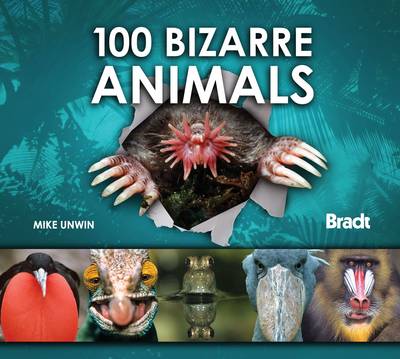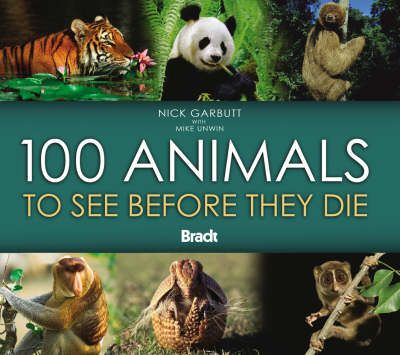Bradt Travel Guides (Wildlife Guides)
4 total works
Beautifully illustrated with full colour photographs throughout, Madagascar Wildlife is a celebration of the unique fauna of a remarkable island and the perfect accompaniment to Bradt's popular general travel guide, Madagascar. This new edition has been fully revised to include newly created national parks and reserves and their resident wildlife. Madagascar Wildlife belongs to a series of Bradt wildlife guides including Antarctica and the Galapagos islands - ideal for natural history enthusiasts and travellers alike.
Some animals just look weird. Take the mandrill, whose outrageous face is coloured to mimic its genitals, or the star-nosed mole whose nose sprouts 22 fleshy tentacles. Others behave strangely - a mallee fowl builds huge mounds of rotting vegetation in which to incubate its eggs. Some are plain ingenious, such as the fog-basking beetle which stands on its head to drink from fog on the breeze (the fog condenses on its body and then trickles down to its mouth), or the cartwheeling spider which turns itself into a wheel to roll down sand dunes when it needs to make a sharp exit. Then there's the horned toad, which squirts blood from its eyes at attackers and the African egg-eating snake which has to dislocate its jaw to eat an egg three times bigger than its head. With glorious - and sometimes grotesque - full-colour photography throughout, 100 Bizarre Animals celebrates the antics and appearance of the world's wackiest creatures.
100 Animals to See Before They Die is inspired by the Zoological Society of London's recently launched conservation project EDGE - Evolutionarily Distinct and Globally Endangered. EDGE targets some of the world's most bizarre and unusual creatures, animals which are extremely distinct in the way they look, live and behave. They have few or no close relatives and require immediate action to save them from extinction. If they disappear there will be nothing like them left on the planet.
Amazingly, many of these species are ignored by existing conservation plans. 100 Animals fights this ignorance by highlighting the danger these species are in and will encourage greater involvement in the fight to save them.
Some EDGE species, such as tigers, elephants and pandas are well known, but 100 Animals features dozens of lesser known and extraordinary animals such as the Yangtze River Dolphin (the world's rarest cetacean), the Bumblebee Bat (the smallest mammal on earth) and the egg-laying Long-beaked Echidna.
Organised by world regions (Eurasia, Australasia, Africa, New World, South East Asia, the Oceans) and with a whole section devoted to Madagascar, 100 Animals is inspirational and packed with information about each animal and where to find it.
Each animal is illustrated in colour and accompanied by a distribution map and information about its key characteristics and the specific threats it faces, plus details about any conservation work taking place.
Amazingly, many of these species are ignored by existing conservation plans. 100 Animals fights this ignorance by highlighting the danger these species are in and will encourage greater involvement in the fight to save them.
Some EDGE species, such as tigers, elephants and pandas are well known, but 100 Animals features dozens of lesser known and extraordinary animals such as the Yangtze River Dolphin (the world's rarest cetacean), the Bumblebee Bat (the smallest mammal on earth) and the egg-laying Long-beaked Echidna.
Organised by world regions (Eurasia, Australasia, Africa, New World, South East Asia, the Oceans) and with a whole section devoted to Madagascar, 100 Animals is inspirational and packed with information about each animal and where to find it.
Each animal is illustrated in colour and accompanied by a distribution map and information about its key characteristics and the specific threats it faces, plus details about any conservation work taking place.
Wildlife is southern Africa's number one visitor attraction. This handy, illustrated book combines field guide and travel guide, explaining where and when to find wildlife and how to identify it. Author Mike Unwin covers everything from the 'Big Five' to dung beetles to sandgrouse, and explores the wildlife hotspots of seven countries, offering insights into animal behaviour and up-to-date conservation perspectives. From superb-value Kruger safaris to Cape Town and its vineyards to malaria-free safaris on South Africa's garden route, southern Africa has it all. Equally useful to both first-timer and serious naturalist, this Bradt guide is also the perfect safari souvenir.



